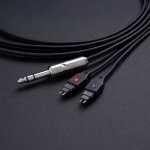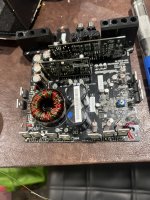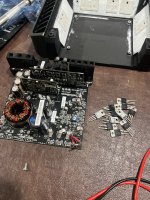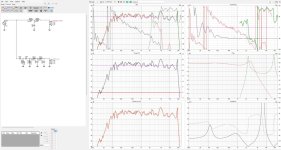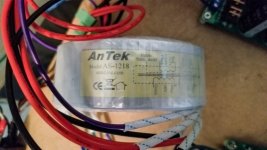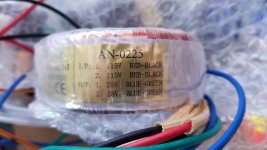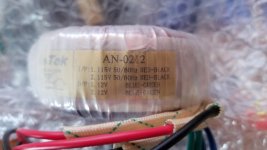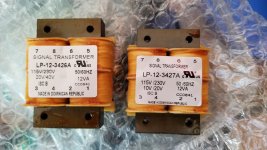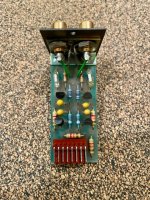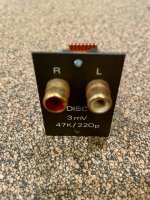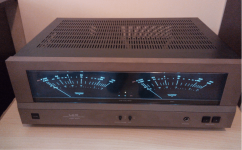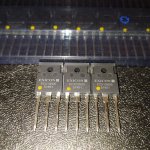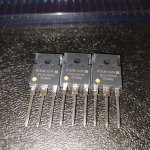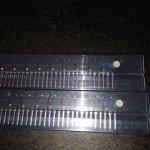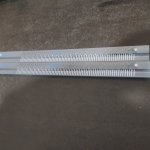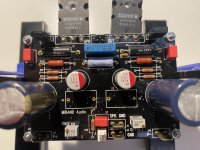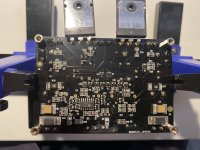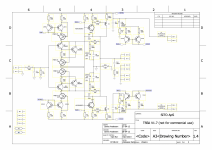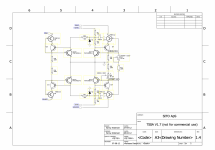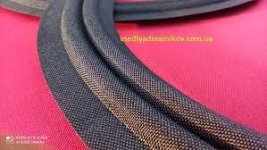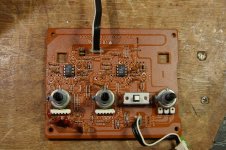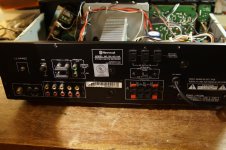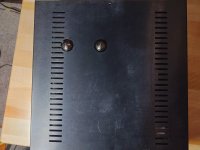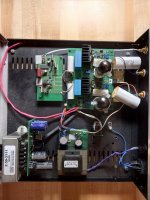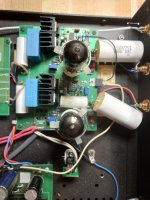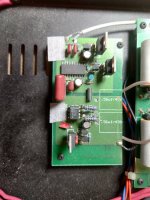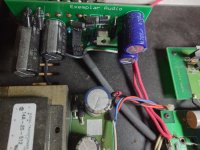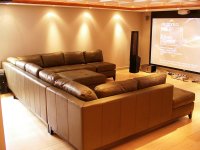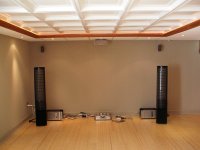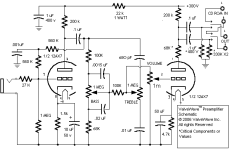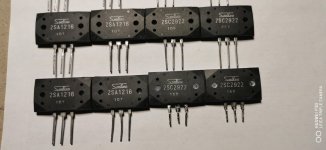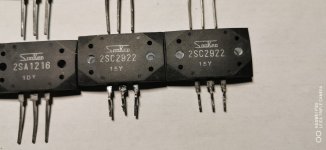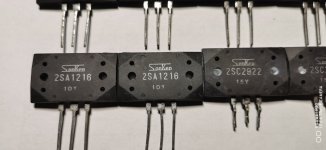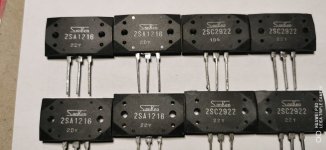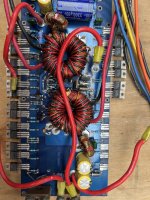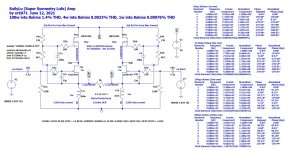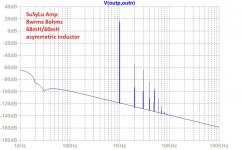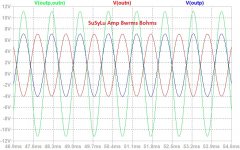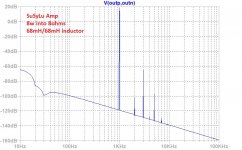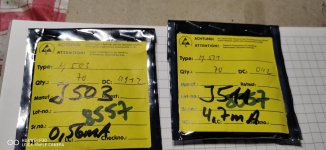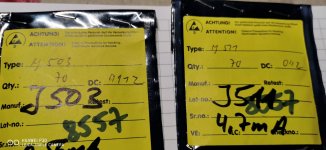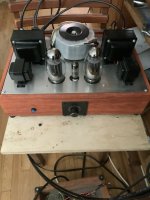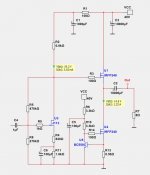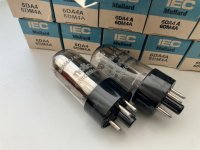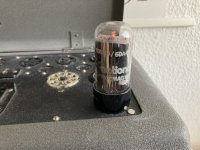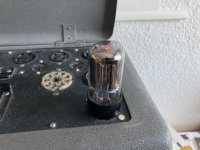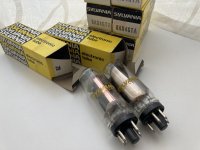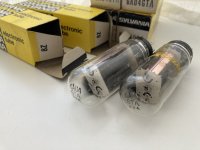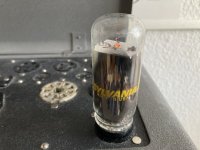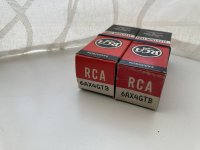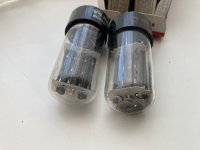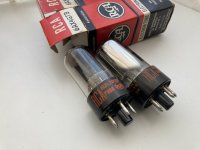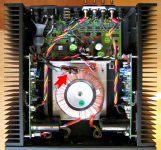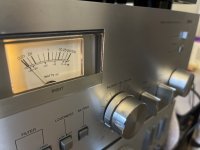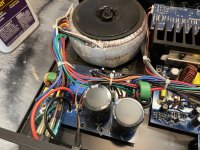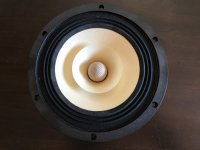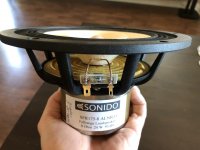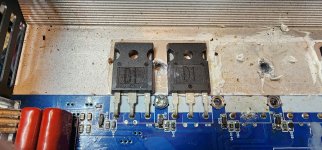Hello to all
I can't contribute much here but I did find on the forum an official schematic for a Unison research Simply 2 so thought it worth showing my schematic for a Simply 4 Pentode (S4P), reverse engineered from my amplifier. I have worked on electronics over the years but not for some years and have little formal training. I've just dug out my Valve Amplifier book by Morgan and will try to understand this better. The schematic may help someone else in the future so I'm putting it here but, I made it really just for my understanding. I believe it's correct but am very happy to be corrected in any parts of my understanding as it's been a while since I've looked at these things. The S2 schematic helped me to get started but it isn't the same.
I've owned this S4P since 1996 and it sits in the dining room with some fairly inexpensive speakers and is driven by LP, CD and DAT. It has always sounded fine but this is not the same standard as the living room equipment. It stopped working last week and I investigated. In case someone just finds this on Google, there are HIGH VOLTAGES in here and risk of injury so don't play with your amp unless you know what you're doing from a safety point of view. I realise everyone on this forum will already know this.
Removing the cage, the top view shows the mains transformer at the rear right (multiple taps), the PSU board and PSU choke at the top left and the output transformers are in each of the two cans - I didn't open these up as I didn't need to. Inputs are at the left front with the selector and variable feedback switch (position 1 or 2). The volume plus source/tape switch are on the front panel with an LED to show the amp is on. The failure was the 10 Ohm power resistor in the PSU board, just due to age.
The underside shows as follows:
Back left is the IEC mains input - with a mains switch at the front left.
In front of that is the heaters board - 6.3V AC for the EL34s and 6.6V DC for the ECC82s.
Opposite is the PSU board and the mains transformer output enters at the fuse. The fat red cables (303V DC) feed the main board and an aux socket at the rear for an offboard phono stage. The thinner red cables (330V DC) feed the output transformers. I'm not sure about running these cables with the output cables but this is the way it was built.
Front right are the inputs and the selector switch board.
In front of that is the volume control board.
The small board is the variable feedback board.
The big board has virtually everything on it.
Looking in more detail at the main board (it's quite stained which is poor as I believe this amp has never been opened):
On the left are the heater feeds and the ECC82 feed also runs an LED to show the amp is on.
Top right has the DC feed, earth on the corner and the red and yellow cables on the right are connecting to the feedback board.
Just below the power connection are a pair of power resistors and an electrolytic cap which are the R8, R9 and C9 in the schematic, directly off the main power feed.
Middle right has a 4k7 power resistor to drop the voltage again to 294V DC as the centre ECC82 uses that. There is a big 400V capacitor at the bottom right which appears to be a ripple smoothing cap (C16).
The volume pot outputs to the board are at the front coming in at the film caps.
The centre ECC82 (V6) is used for both channels - triode 2 is for the right.
The pairs of blue and white cables at the top are the anode and screen connections to the output transformers.
The left part of the board is for the right channel and that's what I have drawn the schematic for but it covers the whole board.
First half of the schematic shows the PSU and pre-amp stage.
After replacing the resistor, I measured the DC voltages and they are shown.
I also ran a small sine wave signal (1KHz and 10mV at the input to V6) in to check stability of the signal with the scope - values in green
The PSU seems clear to me - I didn't look into the mains transformer.
V6 is (as I recall) a standard cathode bias topology (only triode 2 shown here for the right).
V5 triodes are in (I think) a Shunt regulated Push Pull configuration. There is a feedback loop here.
The second half of the schematic shows the HT, signal, feedback loop and ground from the first sheet.
The EL34s are in parallel and I believe this is an ultralinear (Blumlein) configuration. This is the same topology as the Simply 2 but with paralleled valves.
On the right are my resistor equivalents and my notes on the valve pin-outs (as I say, it's been a long time).
Any comments and corrections would be gratefully received. It's been interesting to go back and try to understand this after so many years but I'm not expecting much feedback. I just thought that the next time someone searches for this schematic, they will have a start.
Best wishes, Chris
